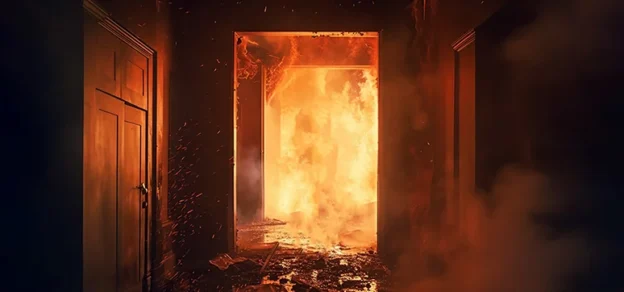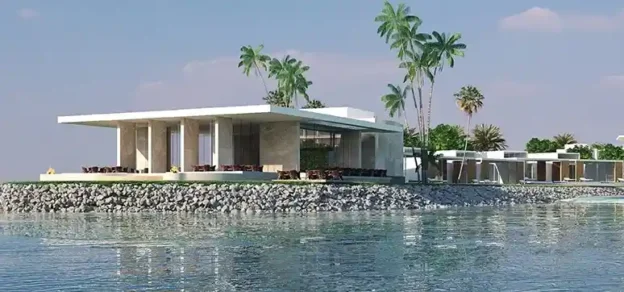Façades during the olden days were only an architectural building cover. Those beautiful architectural building covers became the eye-catcher in the course of any fire incident. Those façade elements had such chemical characteristics which contributed severely to the high Intense and fast propagating external fire. Such characteristics of those façade elements created a necessity for designing the fire-safe façade.
Modern Fire-safe Façade Designs and Fire Tests
Façades, nowadays are designed considering the importance of limiting the external fire propagation. Passive firestop systems are intermingled with façade designs to achieve minimal fire spread. Materials specified to be used on the external façade are being carefully chosen considering their fire performance characteristics.
Fire tests according to various standards are adopted for testing the materials to find out its characteristics such as ‘Reaction to ’ and ‘Resistance to fire’. The development and introduction of new Fire-safe products in the market that are suitable for external envelopes support the designers in achieving a fire-safe façade without compromising the architectural magnificence of the building. These products feed the architect/ consultant’s/engineer’s brains in supporting the development of more unique shaped façades without compromising fire safety. These products are tested according to various fire tests and classified based on various standards.

Façade elements are tested individually as products to verify their fire performance characteristics. Also, the intended façade elements are tested as an assembly to verify the fire propagation. Every country adopts various standards or has its own regulations and test standards for façades.
There are various tests available for the verification and classification of façade systems, ranging from small-scale tests to full-scale tests depending on the nature of the product and location of use in the façade.
The authority having jurisdiction in every country such as civil defense and/or fire and rescue services department frames and authorizes the acceptable standards and tests for respective façade elements and assembly.
Façade Design Requirement – Fire Rating vs Fire Retardance
For the understanding of the non-fire professionals, the ‘Fire rating’ and ‘Fire retardance’ can be explained as below:
• A ‘Fire-rated’’ also known as ‘Fire Resistance Rated’’ product will have the ability to completely resist the fire for some period of time.
• Whereas a ‘Fire Retardant’ product will only have the tendency to slow down or stop the spread of fire or to reduce the intensity of the fire.
A fire-safe façade doesn’t mean the usage of Fire-Rated products. In the event of a fire, an enormous amount of smoke and energy is generated and there must be an escape for this energy and smoke to get released if the smoke management system is absent/failed/inadequate. Else, this energy and smoke will get pressurized which creates the threat of blasting. Also, this high-pressure energy and smoke will strongly affect the firefighting team trying to enter the building for rescue.

Hence, a fire-safe façade requires only fire-retardant products.
The Fire Safe Design Vs Practical Installation
The adverse effects that were felt on recent fires pushed the engineering community to design fire-safe façades whereas the practical installation of the designed façade at project sites is still under the improvisation stage. The message of fire safety in façade installation must be conveyed more loudly to the installation community for achieving more quality and fire-safe installations in order to accomplish an intended fire-safe façade. Installation society is still found to be using some combustible elements on the façade designed with fire-safe intention. Some examples are, using combustible wood or PVC packings, combustible backer rods, combustible gaskets, and sealants, etc. This definitely makes the installation noncompliant with the tested design.
If these items are expected to be used as part of the installation then, those must be tested as a full-scale assembly. The passive fire stop systems such as perimeter firestop and cavity fire and smoke barriers were introduced into the façade design so that, more efficient fire safety can be achieved on façades. But, poor installation of such firestop systems does not give expected effective results in the event of a fire. These non-compliant installations are probably due to lack of budget or lack of training or lack of knowledge or due to lack of time.

Hundreds of technicians and laborers will be involved in façade installation on every project. Lack of knowledge and skill is the primary reason for poor-quality installations. Technicians and laborers of Installation contractors should be educated about the importance of fire safety on their installations, and they should be trained for installations complying with tested assembly.
The un-planned fast-track projects also experience poor quality installations due to lack of time. Hence, planning the project time frame and providing a sufficient time frame will enhance the quality of installation. Lack of budget also plays an important role in the selection of nontested combustible products by contractors for installation. Hence, considering the budget for fire-tested products is an important requirement to achieve fire-safe and quality installations. Paying attention to these lacking areas and involving fire consultants from the design stage will be the remedy for improvising the quality. Also, engaging the fire consultants for inspection during the construction stage will eventually deliver an effective fire-safe façade














